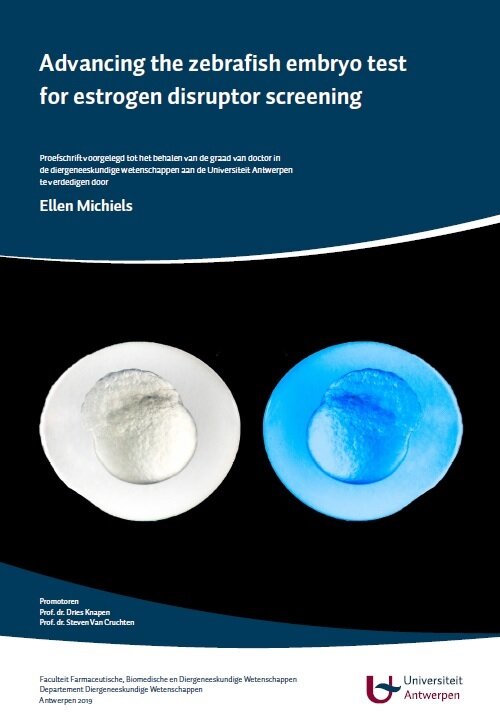Advancing the zebrafish embryo test for estrogen disruptor screening
Ellen Michiels, MSc, PhD
Date: 6th December 2019, at 5PM
Location: Auditorium O5, Campus Drie Eiken

Abstract
The presence of endocrine disrupting compounds (EDCs) in the environment is a major concern. EDCs directly interact with the endocrine system, leading to important adverse effects in humans and wildlife (e.g, related to reproduction, energy metabolism and growth, behaviour, etc.). To identify these compounds, several regulatory strategies and frameworks have been developed in many parts of the world. Various assays are available to assess the endocrine disrupting potential of compounds, and several methods are used to administer the compounds. Within the context of non-mammalian assays, fish are often used as model organisms. Almost all current fish assays use adult animals, but there is increasing public pressure to reduce or even avoid the use of animal testing. Therefore, significant efforts are being made to develop new, alternative testing methods as well as to optimize existing methods for the assessment of endocrine disrupting compounds. The development of a fish embryo test for the detection of EDCs may offer a particular advantage in this context, since fish embryos are not considered test animals until the stage of free feeding while they do offer the biological relevance gained from using a model organism with an intact endocrine system. Assays using fish and fish embryos are mostly performed via aquatic exposure. However, many EDCs are hydrophobic compounds. Aquatic exposure may therefore not always be the most biologically relevant exposure method. In addition, the use of hydrophobic compounds in an aquatic exposure set-up brings several practical challenges as well. In the present work, we used an existing fish embryo test guideline as a basis for the development of an alternative test system for the assessment of EDCs. Specifically, the Fish Embryo Acute Toxicity (FET) Test (OECD Test Guideline 236) was supplemented with a number of specific endpoints relevant to the screening and testing of estrogen disrupting compounds. In addition, we suggest a combination of aquatic exposure (i.e, as currently required in the FET test) and administration of the compound under consideration via micro-injection. Micro-injection into the yolk of the embryo can possibly mimic maternal transfer, and it helps to solve a number of practical challenges that are associated with the use of hydrophobic compounds in aquatic exposure scenarios. Overall, we developed a new approach allowing us to advance the zebrafish embryo test for use in the assessment of estrogen disrupting compounds.